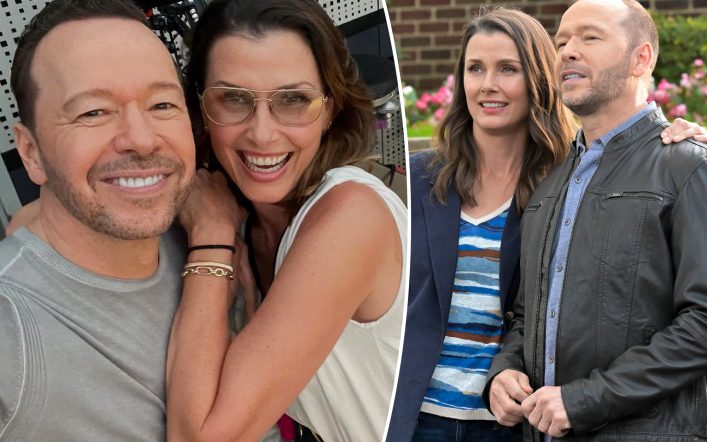Why Katie Holmes, SJP, Kylie Jenner and other glitzy names are in so many cringe low-budget online ads

Today’s stars have no walk of shame.
Once upon a time in Hollywood, A-listers made serious cash hawking TVs, whisky, kitchenware and other goods in cheesy commercials which only aired in Asia, safe in the knowledge nobody they knew would see them.
Actors Brad Pitt (who hawked Roots Ice coffee in Japan) or Harrison Ford (Kirin lager beer) would never stoop to appearing in ads back home, lest it taint their pristine image.
Now, however, respectable celebrities – Katie Holmes, Sarah Jessica Parker and Jason Momoa, to name a few – pop up in an unending tirade of cheaply-made ads, hawking mobile games and cheap beauty products from every screen.
“The shame has been erased. Companies used to fly out stars for ads in Japan, now they’re making them film seconds-long ads on their own phones,” Monique Lewis, a celebrity PR and media marketing strategist, told The Post.
Lewis also noted that, as the baton is passed generationally, her celebrity clients are sometimes valued less than the latest crop of extremely ad-friendly online influencers like Tinx or YouTuber Mr.Beast.
“Hollywood glamor has been exposed … all that glitters is not gold. There used to be a stigma that if a successful film star appeared in commercials it would signal there career was slowing down. Now, anything goes,” she added.
Proving that point, Ford appeared in a two-minute Super Bowl commercial for Jeep this year in which the Oscar-award winning actor declared “freedom is for everyone, but it isn’t free,” to hawk the vehicles and Pitt is the ‘global brand ambassador’ for a coffee company and hawks Cadillacs, albeit in China.
But there does still appear to be a hierarchy.
Holmes, 45, appears casual on a couch in pink loungewear and socks, no shoes in a spam-y ad for the mobile game Travel Town, telling users, “Here’s how it works. Boom.”
In recent years, Kylie Jenner and Nina Dobrev have also endorsed Travel Town. And in 2023, red hot actor Pedro Pascal did an ad for the game Merge Mansion.
Even Carrie Bradshaw couldn’t turn down the unglamorous opportunity to pitch an off-brand game last year in an ad for Solitaire Grand Harvest.
“Download now! It’s free,” chirps Parker, who at least didn’t compromise style for the shameless plug, wearing a navy stiletto and diamond earrings in the commercial for the mobile card game.
“Seinfeld” comedic royalty Jason Alexander took a gamble on cheapening his image, identifying himself a “Royal_Flusher 25 in WSOP,” a low stakes ad for an Israeli mobile game company last year.
More recently — and with a higher quality production, at least — Will Ferrell lent his voice as an animated Monopoly man in a “Monopoly Go!” commercial from last year, alongside Keke Palmer, Chris Pratt and Momoa.
“Tastes like money to me,” Palmer quips in the ad.
Indeed. But to what amount?
Lewis says the ultimate queens of commercialization, the Kardashians are the highest paid, most top tier talent for mobile ads, and they are certainly veterans of the market.
“They have a higher price than even Beyoncé,” Lewis told The Post, noting a Kardashian cameo in a video ad can command five million dollars. Other A-listers can expect “between high six figures to low seven figures.”
She says today, the holy grail of actors, those who are sought after but refuse to sell out and appear in lo res mobile ads are the Queen Bey herself, Sofia Vergara and Madonna.
Part of the appeal for mobile ads in particular is that they’re easy to film, Lewis says, noting the quality is cringe, but that makes them appear more relatable to fast scrolling fans.
“Years ago, celebrities and rock stars didn’t want to be associated with a brand because it would be like selling out. Now, there’s no such thing as selling out — these celebrities are selling in,” said Chuck Welch, founder and chief strategy officer of Rupture Studio, underlining a point about how the world has moved on from the way Generation X and Baby Boomers see things.
“[They’re] using other brands not just to make money, but to burnish their reputation – you can use brand dollars to build your brand as a celebrity,” added Welch, who’s company works with brands including Pepsi, Nike and Microsoft.
While the mobile game ads in particular may seem insignificant, strategist Mark Borkowski told The Post contracts for them are very sophisticated, with the more a celeb drives business for the brand, the more they get paid.
“The deals are based on traction — how many people buy into [the game] off of [the celeb’s] recommendation. They’ll get a sizeable upfront payment and then [other kickbacks depending on downloads or subscribers gained]. The metrics are very sophisticated,” Borkowski told The Post.
The game manufacturers also get a lot of data to work with.
“That data – these micro-transactions – it’s very, very lucrative. At the end of each game users will be served an ad. Do you engage that ad? What does it tell you? They’ve got loads of information around what the audience is doing with that ad.”
Still some fans aren’t buying in. When Jenner endorsed Travel Town on Instagram in December, trolls called the 27-year-old a “sell out” and “cringey.”
Beauty spam is another ad arena not-quite-as-famous-anymore stars flock to, spewing sound bites for paychecks.
Melora Hardin seems to have become better known today for putting Il Makiage foundation on her skin than for her role as Jan in “The Office” more than a decade ago.
Former teen heartthrob Melissa Joan Hart, now 48, has also “sworn” by Il Makiage being a “wrinkle fix.”
They’re apparently not fooling everyone.
“Everybody knows celebrities don’t wear (or use) the crappy brands they get paid to sell,” one user speculate on a Reddit post.
“There’s so much coming at you – its a thing for a second and then its gone,” they said.




